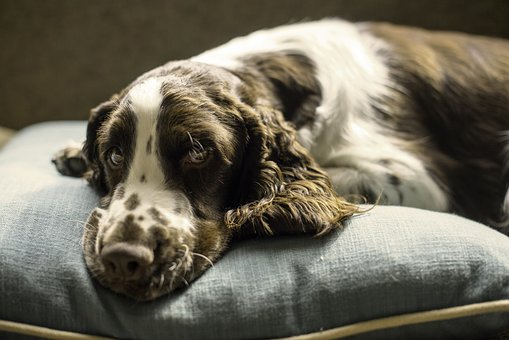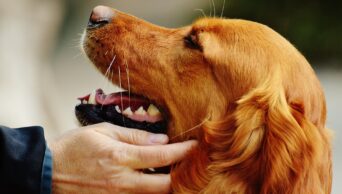7 Ways to Reduce Separation Anxiety in Dogs
Blog , +1
December 1, 2015

When we leave our dogs home alone for the most part they find a familiar spot, curl up and sleep. However dogs with separation anxiety will become very stressed and may exhibit behaviours such as chewing, barking, salivating, urinating, defecating, vomiting or escaping. As dogs are pack animals, and us humans become their packs, it’s unnatural for them to be parted from us, but there are plenty of things we can do to make this situation less stressful and seem normal.
Start Small
Get your dog used to being home alone by starting with periods of just five minutes and gradually build up to hours – how well your dog copes with the process will depend on how quickly you can progress. If you return to an anxious dog, go back a few steps and carry on, taking longer over the time adjustment.
Perfect Place
Give some thought to where you leave your dog when they’re home alone. It’s a mistake to leave them somewhere they don’t usually have much access to, like a utility or kitchen, as they’ll begin to associate it with negative feelings of being left and it’ll feel like a punishment. Get your dog used to being in the place you’ll leave them, so it seems perfectly normal.
Distract
While you’re out try leaving a radio on for your dog. Choose a talk station rather than music (unless it’s classical which soothes dogs) or record the voices of you and your family and play the recording instead. As dogs feel most anxious straight after their owner leaves, your recording only needs to be an hour long. Play the recording in a room you’re often in, but not the room you’ve left the dog in and close the door. Leave your dog puzzles and toys to keep them entertained while you’re away.
Walk First
Before you leave your dog alone, always take them for a brisk walk. This way you’re always leaving your dog in resting mode. If you leave your dog in the morning, wait until after their walk to feed them their breakfast, along with lots of fresh drinking water. This ritual becomes another thing to look forward to and takes the attention away from you leaving.
No Big Deal
When you leave for the day and when you get back, don’t make a big deal of it. You want your dog to know that you leaving them is perfectly normal and requires no special behaviour. If you can manage it, don’t look at your dog directly, talk or touch them. If you can’t manage this and need to say goodbye yourself, do so well before you actually leave the house. Remember, by not saying goodbye you will in no way hurt your dog’s feelings and that you’re doing this for their wellbeing.
Lead Confidently
Dogs are masters of picking up on negative energy, so you need to banish guilty feelings associated with leaving you dog, as your dog will pick up on them. Instead, be confident and assertive as you leave, and in the run up to leaving and they’ll know that everything is fine!
Be Consistent
When dealing with a dog’s separation anxiety, it’s important to be consistent. Follow the steps above and don’t veer off the plan. Even when your dog no longer exhibits any signs of separation anxiety, it’s important to still walk them before you leave the house, be a confident leader and don’t make a big deal of leaving the house.
Have you dealt with separation anxiety? We’d love to hear your stories and tips.


